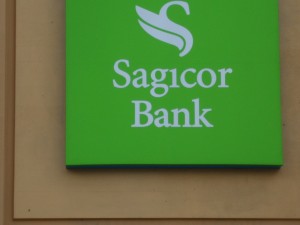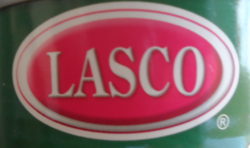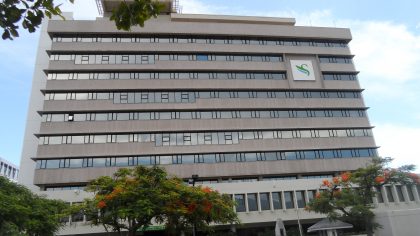
Sagicor Group & PanJam hit new closing highs.
For the six months to June net profit of $6.39 billion attributable to stockholders rose 21 percent over the similar period in 2018. Earnings per share come out at $1.64 per share for the half-year and 95 cents for the quarter.
According to the report accompanying the results, “the current year-to-date results benefited mainly from overall good new business and portfolio growth which were both better than the prior year. The 2018 numbers included large impairment charges on Government of Barbados and other bonds. There were other factors that influenced the outcome for the period, these include, The fluctuating rate of the Jamaican dollar to the US dollar which reached a decline of 5.5 percent in April compared to the rate at December 2018 and by June bounced back to a 2.9 percent decline. The Group picked-up both realized trading gains and unrealized revaluation gains for higher US dollar positions. Appreciation of the Jamaica Stock Exchange main index which grew by 23 percent during the six months period. The Group picked-up good trading gains and increased bond prices on USA stock markets.”
Sagicor Bank enjoyed an excellent period contributing net profits of $1.04 billion for the current period, versus $772 million recorded in 2018, from revenues of $6.36 billion, 18 percent more than the prior year.
The stock traded on the Jamaica Stock Exchange on Tuesday at $58.
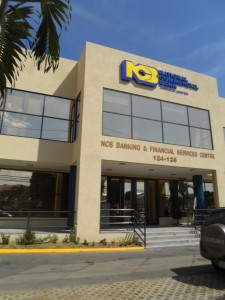
 On Tuesday dealers purchased US$39.6 million from the public at $127.50 and sold $44.86 million at an average of $128.63 down from $128.93 on Monday.
On Tuesday dealers purchased US$39.6 million from the public at $127.50 and sold $44.86 million at an average of $128.63 down from $128.93 on Monday.  The Main Market of the Jamaica Stock Exchange closed higher for the third consecutive day at the close of trading on Tuesday and putting the JSE All Jamaican Composite Index to the highest level since it peaked at 323,606 points in October last year.
The Main Market of the Jamaica Stock Exchange closed higher for the third consecutive day at the close of trading on Tuesday and putting the JSE All Jamaican Composite Index to the highest level since it peaked at 323,606 points in October last year. 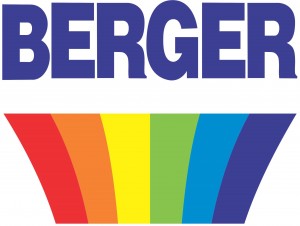
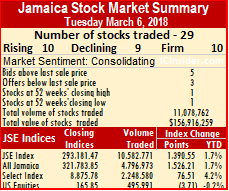 For the month to date an average of 1,452,362 units with an average value at $16,597,564 traded, compared to 1,819,426 units with an average value at $20,506,358 traded on the previous trading day. In contrast, February closed with average of 213,336 units valued at $3,392,475 for each security traded.
For the month to date an average of 1,452,362 units with an average value at $16,597,564 traded, compared to 1,819,426 units with an average value at $20,506,358 traded on the previous trading day. In contrast, February closed with average of 213,336 units valued at $3,392,475 for each security traded.

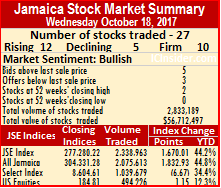 Jamaica Stock Exchange ended trading with a loss of 5 cents at $7.20, with 4,000 units, JMMB Group finished trading at $27, with 180,823 units. Mayberry Investments finished trading 11 cents higher at $4.21, with 200 stock units, 1834 Investments concluded trading 10 cents higher at $1.35, with 3,110 units, PanJam Investment finished 60 cents higher at $38.60, with 485 shares, Portland JSX settled 25 cents higher at $9, with 4,760 units, Radio Jamaica ended trading at $1.15, with 688,353 stock units changing hands. Sagicor Group closed with a loss of $1.50 at $38.50, with 385,734 shares,
Jamaica Stock Exchange ended trading with a loss of 5 cents at $7.20, with 4,000 units, JMMB Group finished trading at $27, with 180,823 units. Mayberry Investments finished trading 11 cents higher at $4.21, with 200 stock units, 1834 Investments concluded trading 10 cents higher at $1.35, with 3,110 units, PanJam Investment finished 60 cents higher at $38.60, with 485 shares, Portland JSX settled 25 cents higher at $9, with 4,760 units, Radio Jamaica ended trading at $1.15, with 688,353 stock units changing hands. Sagicor Group closed with a loss of $1.50 at $38.50, with 385,734 shares,  Sagicor Real Estate Fund closed 75 cents higher at a 52 weeks’ closing high of $14, with 35,500 units, Scotia Group settled $1 higher at $53, trading 35,890 shares, Seprod exchanged 24,500 stock units at $30 nd Supreme Ventures ended trading at $12, with 33,492 stock units. In the main market preference segment, JMMB Group finished trading at $1.15, with 262,000 stock units, Sagicor Bank A preference share traded 1,350 units at $1.05 and the B share saw 9,000 units trading at $1.
Sagicor Real Estate Fund closed 75 cents higher at a 52 weeks’ closing high of $14, with 35,500 units, Scotia Group settled $1 higher at $53, trading 35,890 shares, Seprod exchanged 24,500 stock units at $30 nd Supreme Ventures ended trading at $12, with 33,492 stock units. In the main market preference segment, JMMB Group finished trading at $1.15, with 262,000 stock units, Sagicor Bank A preference share traded 1,350 units at $1.05 and the B share saw 9,000 units trading at $1.